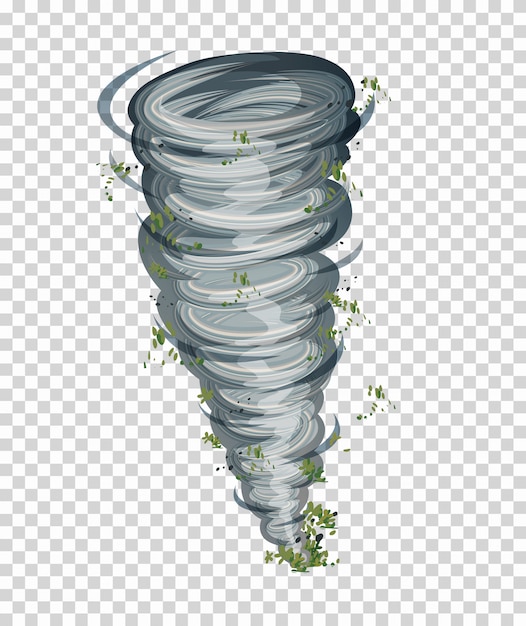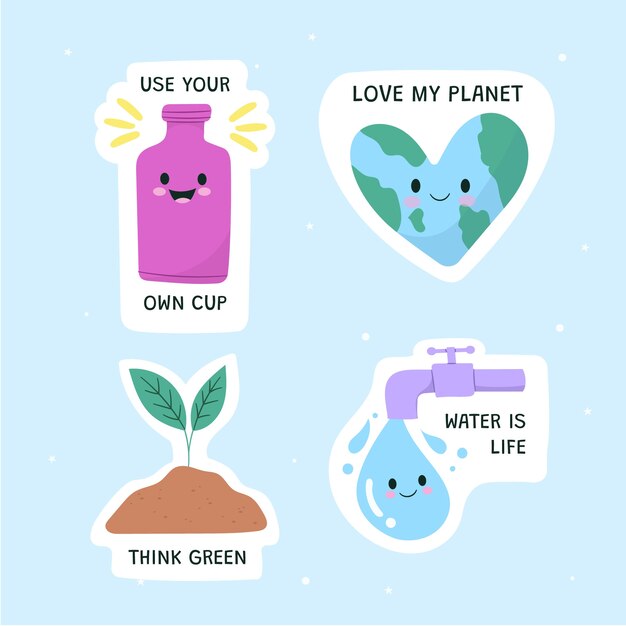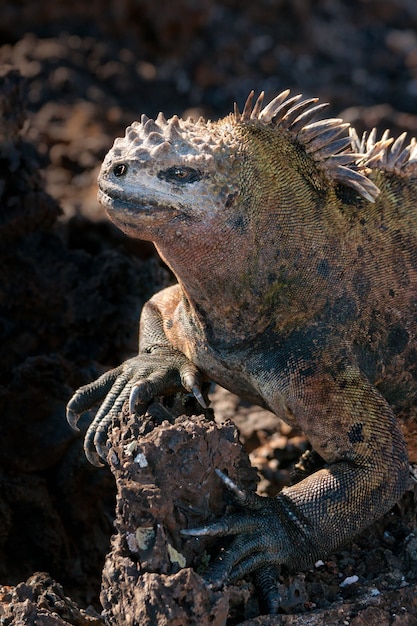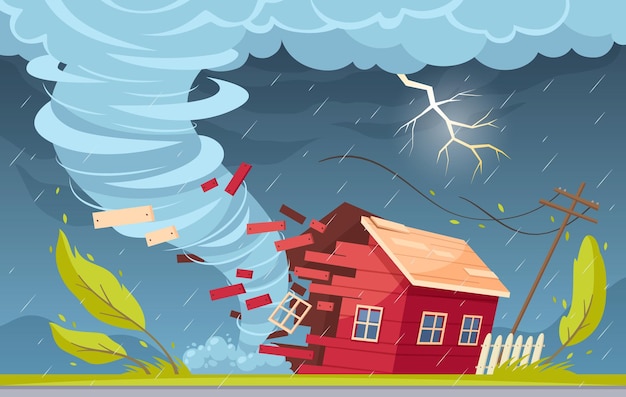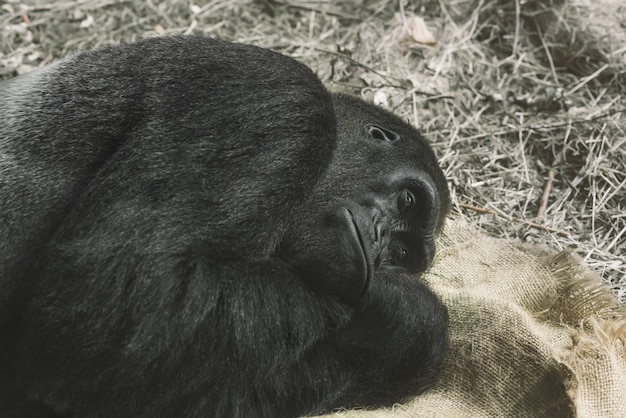Key Facts about the Battle of Lexington and Concord
The Battle of Lexington and Concord marked the beginning of the American Revolutionary War.
The battle took place on April 19, 1775, in Massachusetts.
It was a clash between British soldiers and American colonial militia.
The battle resulted in the first British casualties of the war.
The shot heard around the world originated from this battle.
The events of the battle were immortalized in Ralph Waldo Emerson’s poem, Concord Hymn.
The battles served as a rallying cry for colonists and increased support for independence.
The Minutemen, a well-prepared militia, played a key role in the battle.
British troops outnumbered the colonial militia but faced fierce resistance.
The battle demonstrated American colonists’ determination to fight for their rights and independence.
It was a pivotal moment in American history and marked the beginning of a new era.
The battle helped unite the American colonies against British rule.
Paul Revere’s midnight ride alerted the colonists of the approaching British troops.
The battle saw the beginning of a guerrilla warfare strategy adopted by the American militia.
The conflict provided valuable lessons for both sides in terms of military strategy.
The Battle of Lexington and Concord was the first of many clashes between British troops and colonial forces.
The battle led to the formation of the Continental Army under George Washington’s command.
The battles were initially caused by British attempts to seize colonial militia weapons and ammunition.
The route taken by the British troops to and from Concord became known as the Battle Road.
The battle inspired American colonists to write and declare their grievances against the British crown.
The events of the battle inspired subsequent generations of Americans in their fight for freedom.
The battle showcased the valor and determination of American colonial fighters.
The Battle of Lexington and Concord remains a significant milestone in American history.
The battle exposed the vulnerability of the British troops to colonial resistance.
The conflict sparked a wave of patriotic fervor among the American colonists.
The battles highlighted the importance of military leadership and organization.
The Battle of Lexington and Concord contributed to the development of American military tactics.
The battles were preceded by a period of increasing tension and resistance against British rule.
The battle demonstrated that the American colonists were capable of organized military resistance.
The outbreak of the war caught British authorities off guard and sparked fear in their ranks.
The events at Lexington and Concord provided a turning point in the struggle for American independence.
The battles showcased the determination of ordinary American colonists to defend their liberties.
The battle saw the active involvement of women as spies and providers of intelligence.
The conflict demonstrated the importance of local knowledge and familiarity with the terrain.
The Battle of Lexington and Concord emphasized the power of popular resistance against tyranny.
The battles served as a symbol of American colonists’ rejection of British authority.
The fighting at Lexington and Concord ignited a flame of rebellion that could not be extinguished.
The battles led to significant casualties on both sides, further fueling the determination to win.
The events at Lexington and Concord illustrated the power of collective action in the face of oppression.
The battle showed that the American colonies were more than willing to fight for their rights and freedom.
The conflicts at Lexington and Concord strengthened colonial unity and resolve.
The events of April 19, 1775, forever changed the course of American history.
The battles at Lexington and Concord paved the way for the formation of the United States of America.
The courage of the minutemen at the Battle of Lexington and Concord remains an inspiration to this day.
The battles underscored the American colonists’ belief in the necessity of armed resistance to secure their freedom.
Interesting Watermelon Facts
Watermelons are 92% water, making them a refreshing and hydrating snack.
The world’s heaviest watermelon weighed over 350 pounds!
Watermelons originated in Africa and were first cultivated around 5,000 years ago.
The most popular watermelon varieties are seedless, making them easy to eat.
Watermelons are related to cucumbers, pumpkins, and squash.
The red flesh of watermelons contains lycopene, which is a powerful antioxidant.
Watermelons come in a variety of sizes, ranging from small to giant.
The rind of a watermelon is not edible, but it can be pickled and used in recipes.
Watermelons are a good source of vitamins A and C, as well as potassium.
Watermelon seeds can be roasted and eaten as a snack.
In Japan, square watermelons are grown for easy storage and stacking.
Some watermelon varieties have yellow or orange flesh instead of the traditional red.
Watermelons are a symbol of summer and are often enjoyed at picnics and barbecues.
The watermelon capital of the world is Cordele, Georgia, in the United States.
Watermelon juice is a popular beverage and is often mixed with other fruits.
The sugar content in watermelons can vary depending on the variety and ripeness.
Watermelons are a natural diuretic and can help flush out toxins from the body.
Watermelon seeds are used in a variety of beauty products for their moisturizing properties.
Watermelon-themed festivals are held in many countries to celebrate this juicy fruit.
The watermelon’s scientific name is Citrullus lanatus.
Watermelons contain about 40 calories per cup, making them a guilt-free treat.
The largest watermelon festival in the world is held annually in Murfreesboro, Tennessee.
Watermelons are made up of about 92% water and 8% sugar content.
Watermelon is considered the official state vegetable of Oklahoma, even though it is technically a fruit.
Watermelons were once used as canteens by travelers as they provide hydration and a snack.
The world record for the longest distance a watermelon seed was spit is over 75 feet!
In ancient Egypt, watermelons were placed in the tombs of pharaohs as a source of food in the afterlife.
In China, watermelons are often given as gifts to symbolize good luck and wealth.
Watermelon seeds are rich in protein and healthy fats.
The black seeds often found in watermelons are actually edible and have a nutty flavor.
Watermelon is the most consumed melon in the United States.
Watermelons can help reduce muscle soreness and inflammation after a workout.
Watermelon rinds can be used as a natural skin exfoliator.
Watermelons grow on vines and can be easily trellised for maximum space efficiency.
Watermelon is the state vegetable of Florida, Alabama, and South Carolina.
The juice from watermelons can be used as a natural hair conditioner.
Watermelons can be grilled or roasted for a unique smoky flavor.
Watermelons have been depicted in art and literature for centuries, symbolizing abundance and fertility.
The largest watermelon sculpture ever created measured over 300 feet long.
Watermelons are high in citrulline, an amino acid that can help improve blood flow.
Watermelons have a long shelf life and can stay fresh for up to 2 weeks if stored properly.
Watermelon seeds were discovered in the tomb of King Tutankhamun in ancient Egypt.
Watermelon seeds can be used to make oil, which is used in cooking and skincare products.
Watermelons are an excellent source of hydration for athletes and active individuals.
Watermelon-eating contests are held around the world, where participants compete to see who can consume the most watermelon in a given time.
Tornadoes – Key Facts and Information
Tornadoes form from powerful thunderstorms.
Tornadoes can occur in any part of the world.
Tornadoes are often accompanied by strong winds and hail.
The United States experiences the most tornadoes in the world.
Tornadoes can have wind speeds of over 300 miles per hour.
Tornadoes can cause significant damage to buildings and infrastructure.
The strongest tornadoes are classified as EF5 on the Enhanced Fujita scale.
Tornadoes can vary in size from a few meters to over a mile wide.
Tornadoes can last for just a few minutes or for several hours.
Most tornadoes occur between 3 pm and 9 pm.
Tornadoes can sound like a freight train or a loud roar.
Tornadoes often create a funnel-shaped cloud called a condensation funnel.
Tornadoes can pick up and carry objects for miles.
Tornadoes can create a devastating path of destruction known as a tornado track.
Tornadoes can form over land or water.
Tornadoes have been reported on every continent except Antarctica.
Tornadoes can occur during any season, but are most common in the spring and summer.
Tornadoes can cause rain-wrapped conditions, making them difficult to see.
Tornadoes can cause sudden changes in atmospheric pressure.
Tornadoes can form from the interaction of warm and cold air masses.
Tornadoes can also be influenced by topography and local wind patterns.
Tornadoes can occur in conjunction with severe thunderstorms.
Tornadoes can generate intense lightning and heavy rainfall.
Tornadoes can produce multiple vortexes, creating a swirling effect.
Tornadoes can dissipate just as quickly as they form.
Tornadoes can produce mesmerizing and terrifying visuals.
Tornadoes can create a sense of awe and fascination in their destructive power.
Tornadoes can be studied and tracked through advanced meteorological technology.
Tornadoes can be predicted to some extent, but their exact paths are hard to determine.
Tornadoes can have a significant impact on local ecosystems, disrupting habitats.
Tornadoes can cause power outages and disrupt communication networks.
Tornadoes can result in the displacement of wildlife and human populations.
Tornadoes can have long-lasting psychological effects on those who experience them.
Tornadoes can inspire resilience and community unity in affected areas.
Tornadoes can lead to increased preparedness and emergency response initiatives.
Tornadoes can serve as a reminder of the power and unpredictability of nature.
Tornadoes can generate tornado sirens and emergency alerts to warn residents.
Tornadoes can form multiple funnel clouds simultaneously, creating a spectacle.
Tornadoes can leave behind a trail of debris, making cleanup and recovery challenging.
Tornadoes can occur in rural areas as well as densely populated cities.
Tornadoes can have unique, swirling cloud formations that are visually striking.
Tornadoes can create a whirling effect, resulting in a circular pattern of destruction.
Tornadoes can produce vivid rainbows as a result of water droplets in the air.
Tornadoes can create a sense of urgency and adrenaline in those seeking shelter.
Tornadoes can serve as a reminder of the importance of preparedness and safety measures.
Fun Facts About Recycling for Kids
Recycling is like giving second chances to materials.
Recycling can help save the Earth, one bottle at a time.
Did you know that recycling paper saves trees?
Recycling is a superhero power that we can all have.
When we recycle, we show love to the planet.
Recycling can turn old things into new treasures.
The more we recycle, the cleaner the Earth becomes.
Recycling is a cool way to make a positive impact on the environment.
Recycling teaches us about taking care of our surroundings.
Did you know that plastic bottles can be recycled into new clothing?
Recycling is a fun way to use our imagination and creativity.
Every time we recycle, we contribute to a better future.
Recycling is a team effort that everyone can be a part of.
Did you know that recycling one aluminum can saves enough energy to power a TV for three hours?
Recycling reduces the need for landfills, making more space for nature.
By recycling, we can protect and preserve wildlife habitats.
Recycling is not just about throwing things away; it’s about giving them a new purpose.
Did you know that recycling one glass bottle saves enough energy to power a light bulb for four hours?
Recycling helps to conserve natural resources like water and minerals.
Recycling is a way to show respect for the environment we live in.
By recycling, we can create a brighter and greener future.
Did you know that recycling plastic helps reduce air pollution?
Recycling is a small action that has a big impact on the planet.
Recycling is a cycle of transformation and renewal.
By recycling, we can help reduce greenhouse gas emissions.
Did you know that recycling one ton of cardboard saves over 17 trees?
Recycling teaches us to be mindful of our consumption habits.
Recycling is a habit that can make a difference in the world.
By recycling, we help to conserve energy and reduce pollution.
Did you know that recycling one ton of paper saves 7,000 gallons of water?
Recycling is a way to reduce waste and keep our oceans clean.
When we recycle, we give materials a chance to have a second life.
Recycling is a responsible choice that benefits both us and future generations.
Did you know that recycling one ton of plastic can save up to 16.3 barrels of oil?
Recycling is a way to support a sustainable future for all.
Recycling is a superpower that can make a positive change in the world.
By recycling, we contribute to a healthier and cleaner Earth.
Did you know that recycling one ton of aluminum saves enough energy to power a house for 10 years?
Recycling is a way to turn trash into treasure.
Recycling teaches us about the importance of reducing, reusing, and recycling.
By recycling, we help to conserve natural habitats.
Did you know that recycling one ton of steel saves 2,500 pounds of iron ore, 1,400 pounds of coal, and 120 pounds of limestone?
Recycling is a way to save energy and reduce the effects of climate change.
Recycling is like a puzzle where we fit the pieces back together in a new way.
Did you know that recycling one ton of glass saves enough energy to power a computer for three weeks?
10 Fascinating Rainforest Facts for Kids
The rainforest is like a giant green oasis filled with amazing creatures.
Rainforests are home to over half of the world’s plant and animal species.
It’s estimated that rainforests absorb about 30% of the world’s carbon dioxide emissions.
Rainforests are often called the lungs of the Earth because they produce so much oxygen.
The Amazon Rainforest is the largest rainforest in the world, covering more than 2.1 million square miles.
Every minute, an area the size of 40 football fields is destroyed in the Amazon Rainforest.
Rainforests are so densely packed with trees that even during the day it can be dark inside.
Hundreds of indigenous tribes live in rainforest regions and depend on them for their survival.
The beautiful blue morpho butterfly can be found in rainforests and has wingspan of up to 8 inches.
Some plants in the rainforest can be used as natural remedies for various illnesses.
A single tree in the rainforest can be home to hundreds of different species.
Rainforests influence weather patterns around the world by releasing moisture into the atmosphere.
Rainforests are incredibly diverse, with different layers or levels including the forest floor, the understory, the canopy, and the emergent layer.
Toucans, with their vibrant beaks, are one of the iconic birds found in the rainforest.
Orchids, with their beautiful and unique flowers, are commonly found in rainforests.
Some rainforest animals have amazing adaptations, like the ability to blend into their surroundings.
Poison dart frogs are tiny, colorful creatures found in rainforests. They get their name from the toxin on their skin, which can paralyze or kill predators.
The tallest tree in the rainforest can reach heights of up to 200 feet.
Rainforests are full of interesting sounds, like the calls of howler monkeys and the chirping of insects.
Some of the world’s most famous waterfalls, like Angel Falls, are found in rainforest regions.
Rainforests are like treasure chests filled with an incredible variety of plants and animals waiting to be discovered.
Some plants in the rainforest have developed unique defense mechanisms, like thorns or toxins, to protect themselves.
Rainforests are so important for biodiversity that they’re often referred to as biodiversity hotspots.
Toucans are known to eat fruit and play a crucial role in seed dispersal within the rainforest.
The rainforest has so many different shades of green that it’s like a living painting.
Many medicines and drugs that we use today were originally derived from rainforest plants.
Rainforests are ancient ecosystems that have been around for millions of years.
Insects like ants and termites play a crucial role in decomposing dead organic matter in the rainforest.
Rainforests are home to many endangered species, including the orangutan and the jaguar.
Rainforest trees can absorb rainwater like sponges and release it slowly, helping to prevent floods and droughts.
Costa Rica is known for its efforts in rainforest conservation, with a significant portion of its land protected.
Rainforests are like schoolhouses, teaching us about the interconnectedness of all living things.
Walking through a rainforest is like stepping into a magical world filled with lush vegetation and hidden wonders.
Exploring the rainforest is a sensory experience, with an array of smells and sounds filling the air.
The biodiversity of the rainforest is so immense that scientists estimate we’ve only discovered a fraction of its species.
The rainforest is a constant source of inspiration for artists, writers, and filmmakers.
Rainforests are a treasure trove for food, with many tropical fruits and nuts originating from them.
Many of the world’s coffee beans come from rainforest regions.
Rainforests are an important defense against climate change, as they absorb the carbon dioxide that contributes to global warming.
The balance of life in the rainforest is delicate, with every species playing a unique role in the ecosystem.
The sound of rain falling on the rainforest canopy is often described as a soothing lullaby.
Scientists are still discovering new species in the rainforest, showing us that there’s still so much to learn.
Rainforests are like natural air conditioners, as the evaporation from the trees helps to cool the air.
One hectare of rainforest can contain more than 750 types of trees and 1,500 species of higher plants.
Rainforests are one of the most magnificent and awe-inspiring places on Earth, and their protection is crucial for the future of our planet.
Penguin Fun Facts for Kids
Penguins are birds, but they can’t fly!
Penguins have a special gland that helps them stay waterproof.
Did you know that penguins have a layer of fat called blubber to keep them warm in cold water?
Penguins have excellent eyesight, both underwater and on the land.
Some penguins can dive as deep as 1,500 feet!
Penguins have a unique way of walking called waddling.
Penguins have an impressive ability to swim up to 15 miles per hour!
Penguins mate for life and often return to the same nesting site each year.
The largest penguin species, the Emperor Penguin, can grow up to 4 feet tall.
Some penguins, like the Gentoo Penguin, have colorful feathers on their head.
Penguins use a special call, known as a braying call, to communicate with each other.
Penguins swallow small stones to help them digest their food better.
Penguins have a thick layer of blubber to insulate themselves from the cold.
Penguins can hold their breath for several minutes while diving underwater.
Penguins are excellent divers and can reach depths of over 500 meters.
Penguins have a streamlined body and tightly-packed feathers to help them swim faster.
Penguins can slow down their heart rate to conserve energy during long dives.
Penguins are social creatures and live in large colonies called rookeries.
Penguins build nests out of rocks or dig burrows to lay their eggs.
Penguins take turns incubating their eggs, with both the male and female sharing the responsibility.
The smallest penguin species, the Little Blue Penguin, stands about 13 inches tall.
Penguins eat mainly fish and krill.
Some penguins, such as the Adelie Penguin, can slide on their bellies to move around faster.
Penguins have a waterproof coat of feathers that keeps them dry and warm in the water.
Penguins have a special gland near their eyes that filters out excess salt from seawater.
Penguins molt their feathers once a year, which helps them stay in top condition.
Penguins have been around for millions of years, dating back to the time of the dinosaurs.
Penguins have a unique way of greeting each other by bowing their heads.
Penguins are excellent swimmers but are quite clumsy on land.
Penguins have a high-pitched call that helps them find their mates in crowded colonies.
Penguins have a natural instinct to huddle together for warmth during freezing temperatures.
Penguins have a thick layer of blubber that helps them float in the water.
Penguins have a strong sense of direction and can navigate long distances to find their way back to their colony.
Penguins have a sharp beak that helps them catch and eat fish.
Penguins have a tight-knit social structure within their colonies.
Penguins have a layer of feathers called aqua-dynamic feathers that help reduce drag while swimming.
Penguins have a black and white coloration, which helps camouflage them from predators.
Penguins have a unique way of sliding on their bellies called tobogganing.
Penguins have specialized feathers that allow them to swim more efficiently.
Penguins have a keen sense of hearing, which helps them detect predators underwater.
Penguins have a streamlined body shape that reduces drag in the water.
Penguins have dense bones to help them dive and swim deeper.
Penguins have a specialized gland near their tail that releases an oily substance to help waterproof their feathers.
Penguins have a strong sense of community and work together to protect their young.
Penguins have a unique mating ritual that involves singing and dancing to attract a mate.
Interesting Facts about Marine Iguanas
Marine iguanas are the only lizards in the world that forage in the ocean.
These unique creatures are found only in the Galapagos Islands.
Marine iguanas have a specialized nasal gland that helps them expel excess salt from their bodies.
Despite their scaly appearance, marine iguanas are excellent swimmers.
Their dark color helps them absorb heat from the sun after a long swim in the cold ocean waters.
Marine iguanas are vegetarians and mainly feed on marine algae.
They can dive to depths of up to 30 meters in search of food.
Mating rituals of marine iguanas involve aggressive behavior such as head bobbing and biting.
Female marine iguanas lay their eggs in the sand and leave them to hatch on their own.
Hatchlings must make their way to the ocean immediately to avoid being preyed upon by birds.
Marine iguanas can change their body temperature to adapt to their surroundings.
These remarkable reptiles have the ability to shrink and regrow their tails when necessary.
Marine iguanas can stay underwater for up to half an hour, thanks to their efficient oxygen storage.
They have sharp, serrated teeth that help them tear apart algae.
These lizards have long, strong claws that enable them to grip rocks and move easily on land.
Marine iguanas have a lifespan of up to 25 years in the wild.
They are considered a vulnerable species due to habitat loss and predation by introduced species.
Marine iguanas have a unique appearance with flat, blunt noses and spiked crests on their heads and backs.
They have a symbiotic relationship with certain hermit crabs, as the crabs provide them with cleaning services.
Marine iguanas have excellent eyesight, helping them spot predators and food from a distance.
They have strong jaws that allow them to crush and consume tough algae.
Marine iguanas are excellent climbers, often seen basking on rocky outcrops.
These lizards have sharp claws that aid them in digging burrows for shelter.
Their flat shape and dark color help them camouflage against the volcanic rocks of the Galapagos Islands.
Marine iguanas often sneeze out excess salt after feeding, earning them the nickname snot dragons.
They have a strong sense of smell, allowing them to locate patches of algae underwater.
Marine iguanas are highly territorial and often engage in battles with rival males.
During the breeding season, males develop vibrant colors to attract mates.
Their skeleton is adapted to withstand the pressure changes experienced during deep dives.
Marine iguanas are able to regulate their body temperature by adjusting their blood circulation.
Their eggs have a soft, leathery shell that protects them during incubation.
Marine iguanas have a streamlined body shape, perfect for swimming through ocean currents.
They are known for their impressive ability to withstand harsh environmental conditions.
Marine iguanas display unique courtship behaviors, including head nudging and parallel swimming with potential mates.
These lizards have a high salt tolerance due to their specialized gland that filters excess salt from their bloodstream.
Marine iguanas have a strong sense of direction, allowing them to navigate accurately to their feeding grounds.
They have specialized teeth at the front of their mouth for gripping algae and flat molars at the back for chewing.
Marine iguanas are excellent indicators of the health of coastal ecosystems.
They are capable of diving repeatedly in search of food, making them efficient foragers.
Marine iguanas are not poisonous, despite their intimidating appearance.
They are well adapted to the harsh and rocky terrain of their island habitat.
Unlike most other reptiles, marine iguanas have the ability to dive into cold water without experiencing a drop in body temperature.
They play a crucial role in the Galapagos ecosystem by controlling algae growth on the rocky shores.
Marine iguanas have a unique way of thermoregulating by exposing as much of their body surface as possible to the sun.
These fascinating creatures are a symbol of the unique biodiversity found in the Galapagos Islands.
Hurricane Facts for Kids
Did you know that hurricanes are formed over warm ocean waters?
Hurricanes are the most powerful storms on Earth!
Hurricane winds can reach speeds of over 100 miles per hour!
Hurricanes can last for up to two weeks!
The eye of a hurricane is the calmest part, with clear skies and no rain.
The word hurricane comes from the Taino Native American word, meaning evil spirit of the wind.
Hurricanes are given names to make it easier to track and remember them.
The strongest hurricanes are categorized as Category 5 storms.
Hurricanes can cause storm surges, which are walls of water that flood coastal areas.
Hurricane Katrina, in 2005, was one of the deadliest and costliest hurricanes in U.S. history.
Hurricanes can be so strong that they can knock down trees, buildings, and power lines.
Hurricanes can bring heavy rain that leads to flooding.
The Atlantic hurricane season runs from June 1st to November 30th.
Hurricanes are known by different names in different parts of the world – typhoons in the Pacific and cyclones in the Indian Ocean.
Hurricanes form in the warm tropics and move towards the cooler poles.
The eye wall of a hurricane is where the strongest winds and heaviest rainfall occur.
Hurricane hunters fly into hurricanes to collect important data and help predict their paths.
Heavy rainfall from hurricanes can cause rivers to overflow, leading to more flooding.
Storm surge is the biggest threat to coastal areas during a hurricane.
Some hurricanes are given names of people, animals, or even places.
Hurricanes need warm ocean waters, moisture, and light winds to form and strengthen.
Hurricanes can create tornadoes within them.
In the Pacific Ocean, hurricanes are less common, but they are called typhoons.
Hurricanes rotate counterclockwise in the Northern Hemisphere and clockwise in the Southern Hemisphere.
Hurricanes can cause massive power outages that can take days or weeks to restore.
The eye of a hurricane can range from a few miles to more than 50 miles in diameter.
Hurricane names are reused every six years, unless a storm is particularly devastating and its name is retired.
NOAA, the National Oceanic and Atmospheric Administration, monitors and forecasts hurricanes in the United States.
Hurricanes can knock down telephone poles, trees, and other objects due to their strong winds.
Hurricane Sandy, in 2012, caused significant damage and flooding in the northeastern United States.
Hurricanes are given names to avoid confusion when multiple storms are occurring at the same time.
The storm surge caused by hurricanes is the leading cause of hurricane-related deaths.
Hurricanes can bring hail, lightning, and intense thunderstorms.
Hurricanes can travel hundreds or even thousands of miles before dissipating.
Hurricanes can form in different parts of the world, including the Atlantic Ocean, Caribbean Sea, Gulf of Mexico, and Pacific Ocean.
The Saffir-Simpson Hurricane Wind Scale is used to rate the intensity of hurricanes, from Category 1 to Category
The eyewall of a hurricane is the most dangerous part, with the strongest winds and heaviest rain.
Hurricane Andrew, in 1992, was one of the costliest hurricanes to hit the United States.
The warm, moist air from the ocean fuels the growth and intensity of hurricanes.
Hurricanes can cause significant damage to agriculture and disrupt food supplies.
Strong hurricanes can create massive waves, making it dangerous for ships and boats at sea.
Climate change may be contributing to the increased frequency and intensity of hurricanes.
Hurricanes can form in both the northern and southern hemispheres.
The intensity of a hurricane is determined by the wind speed, which is measured in miles per hour.
It is important to have an emergency plan in place and to evacuate if instructed to do so during a hurricane.
Interesting Hanukkah Facts to Know
Hanukkah celebrates the victory of light over darkness.
Menorahs are lit during Hanukkah to remember the miracle of the oil.
The holiday lasts eight days and nights.
Hanukkah is also known as the Festival of Lights.
It is customary to exchange gifts during Hanukkah.
The holiday starts on the 25th of Kislev in the Hebrew calendar.
The menorah has nine branches, one for each night plus a helper candle.
Hanukkah commemorates the rededication of the Second Temple in Jerusalem.
The spinning top game called dreidel is popular during Hanukkah.
Traditional Hanukkah foods include latkes (potato pancakes) and sufganiyot (jelly-filled doughnuts).
Hanukkah is a joyous celebration of Jewish pride and heritage.
Every night, one additional candle is lit on the menorah.
Hanukkah playlists often include spirited music like I Have a Little Dreidel and Rock of Ages.
Families gather to celebrate and share in the Hanukkah festivities.
Dreidels have Hebrew letters on each side symbolizing a great miracle happened there.
The menorah is placed in a prominent place, often near a window, to spread the light.
It is common to play the dreidel game using chocolate coins as markers.
Hanukkah is a time to remember and honor Jewish resilience throughout history.
Hanukkah is celebrated by Jewish communities all over the world.
The spinning motion of the dreidel symbolizes the ever-changing nature of life.
Some families have a Hanukkah bush decorated with Jewish-themed ornaments.
Hanukkah candles are traditionally placed from right to left but lit from left to right.
The miracle of the oil lasted for eight days, hence the eight nights of Hanukkah.
Hanukkah is a time for gratitude and appreciation for the blessings in life.
Many Jewish schools and organizations hold special Hanukkah events and activities.
Hanukkah traditions vary among different Jewish communities.
The colors blue and white are often associated with Hanukkah.
Hanukkah desserts often feature nuts, like rugelach (pastry filled with nuts and fruits).
Lighting the menorah is a symbol of spreading hope and positivity.
Hanukkah is a chance for families to come together and create lasting memories.
The dreidel game is a way to teach children about charity and giving.
Hanukkah represents the importance of preserving Jewish culture and heritage.
The story of Hanukkah is about a small group of Jewish fighters who resisted oppression.
The Hanukkah story is found in the ancient Jewish text called the Talmud.
The oil that was found in the temple only enough for one day ended up lasting eight days.
Hanukkah is a time for reflection and recommitment to one’s faith.
Hanukkah is known for its delicious traditional foods enjoyed by all.
The menorah is a symbol of hope and unity.
Special blessings are recited while lighting the Hanukkah candles.
Hanukkah gelt is often given to children to celebrate the holiday.
Hanukkah celebrates the freedom to practice one’s religion without persecution.
The menorah’s central candle is called the shamash and is used to light the other candles.
Hanukkah songs often tell the story of the holiday and spread joy and warmth.
Hanukkah is a time for community gatherings and festive events.
The lighting of the menorah is a powerful reminder of the resilience and strength of the Jewish people throughout history. Hope these statements about Hanukkah facts inspire you!
Discovering Fascinating Facts about Neptune – Fun for Kids
Neptune is the eighth planet from the sun in our solar system.
It is named after the Roman god of the sea.
Neptune is a gas giant, made up mostly of gaseous hydrogen and helium.
The planet is bright blue in color, primarily because of the methane in its atmosphere.
Neptune has the strongest winds in the solar system, with speeds reaching up to 2,100 kilometers per hour.
It takes Neptune about 165 Earth years to complete one orbit around the sun.
The gravity on Neptune is 17% stronger than Earth’s gravity, which means you would weigh less there.
The Great Dark Spot on Neptune is similar to Jupiter’s Great Red Spot and is a huge storm that was once visible from Earth.
Neptune has 14 moons, the largest of which is Triton.
Triton is the coldest known object in our solar system, with temperatures as low as -235 degrees Celsius.
Triton is also unique because it orbits Neptune in the opposite direction to the planet’s rotation.
Neptune’s rings are made up of ice particles, dust, and small rocks.
The five main rings of Neptune are named Galle, Le Verrier, Lassell, Arago, and Adams.
Every 248 years, Pluto’s elliptical orbit brings it closer to the sun than Neptune, making Neptune the furthest planet from the sun during that time.
Neptune has a faint system of faint rings that are difficult to see from Earth.
The Voyager 2 spacecraft is the only spacecraft to have visited Neptune, passing by in 1989.
The planet can be seen with a telescope from Earth, but it appears as a small, blurry dot due to its distance.
Neptune’s atmosphere is mainly composed of hydrogen, helium, and methane, which gives it its blue color.
The blue color of Neptune’s atmosphere is so striking that it can sometimes be mistaken for a water planet.
Neptune has a thin layer of clouds made of methane above its atmosphere.
Neptune’s average temperature is about -200 degrees Celsius, making it one of the coldest planets in the solar system.
In the mythology of the ancient Romans, Neptune was the god of the sea and brother of Jupiter and Pluto.
Neptune’s diameter is about four times that of Earth.
The deep blue color of Neptune’s atmosphere is a result of the absorption of red light by methane gas.
Neptune has a stronger magnetic field than any other planet in the solar system.
If you could stand on Neptune, you would weigh less than 10% of what you weigh on Earth.
Unlike Earth days, a day on Neptune lasts only 16 hours and 6 minutes.
The winds on Neptune are so strong that they can create massive storms that last for several years.
If Neptune was hollow, it could fit nearly 60 Earths inside it.
The first recorded sighting of Neptune was in 1846 by German astronomer Johann Galle.
The Voyager 2 spacecraft discovered six new moons of Neptune during its flyby.
The distance from the sun to Neptune is about 2.7 billion miles, or 4.3 billion kilometers.
Neptune has a thick layer of clouds made up of ammonia and hydrogen sulfide.
The gravitational pull on Neptune is about 17 times stronger than Earth’s gravitational pull.
The moons of Neptune are named after characters from Greek mythology.
Neptune’s largest moon, Triton, was discovered just 17 days after Neptune was first observed.
Neptune has a very faint ring system that was discovered in 1984.
The rings of Neptune are thought to be made up of small particles suspended in orbit around the planet.
Neptune’s moons are believed to be captured objects from the Kuiper Belt, a region beyond Neptune’s orbit.
Neptune has a mass about 17 times that of Earth.
The average distance between Neptune and the sun is about 2.8 billion miles, or 4.5 billion kilometers.
Neptune is not visible to the naked eye from Earth and can only be observed with a telescope.
The atmosphere on Neptune is so thick that it would crush a human being if they were able to stand on the planet’s surface.
Neptune’s atmosphere is constantly changing, as different storms and cloud formations come and go.
The blue color of Neptune’s atmosphere is caused by the absorption of red light by particles in the atmosphere.
Learn About France – Fun Facts for Kids
France is known for its iconic landmarks like the Eiffel Tower and Notre Dame Cathedral.
French is the official language of France.
France is famous for its delicious cuisine, including croissants, baguettes, and escargot.
The Louvre Museum in Paris is the largest art museum in the world.
The French love to play soccer, and their national team has won the FIFA World Cup twice.
France is the most visited country in the world, with millions of tourists flocking to its cities, beaches, and countryside.
French fashion is renowned worldwide, with brands like Chanel and Louis Vuitton.
France is known for its wine production, particularly Champagne, Bordeaux, and Burgundy.
The French Revolution, which took place in the late 18th century, brought significant changes to the country.
France is home to the Palace of Versailles, a grand royal residence known for its stunning gardens.
French artists like Claude Monet, Vincent van Gogh, and Henri Matisse have made significant contributions to the art world.
The French Alps offer beautiful landscapes and excellent skiing opportunities.
The French Riviera is a glamorous and luxurious coastal region favored by the rich and famous.
France has a rich history, including being one of the major powers during the medieval period and the Renaissance.
French people love to celebrate their national holiday, Bastille Day, which marks the beginning of the French Revolution.
The Arc de Triomphe in Paris is a famous monument honoring those who fought and died for France during the French Revolution and Napoleonic Wars.
France is known for its high-speed trains, including the famous TGV (Train à Grande Vitesse).
French children go to school five days a week, typically from Monday to Friday.
France has a diverse range of landscapes, from beautiful coastlines to breathtaking mountains.
French literature has produced notable authors like Victor Hugo, Jules Verne, and Alexandre Dumas.
France is the largest country in the European Union by land area.
The French take great pride in their cultural heritage, hosting numerous festivals and events throughout the year.
France is one of the founding members of the European Union.
The Tour de France is the most famous bicycle race in the world, taking place annually in France.
French is considered the language of love, and France is often associated with romance and charm.
France has a strong tradition of art and craftsmanship, with specialties such as glassblowing, pottery, and couture fashion.
The French motto Liberty, Equality, Fraternity reflects the country’s values of freedom, equality, and solidarity.
The French love their cheese, and there are over 1,000 different types produced in the country.
France has a parliamentary republic form of government.
French Riviera beaches attract millions of visitors every year, offering relaxation and sunbathing opportunities.
France has numerous UNESCO World Heritage sites, including Mont Saint-Michel, the Palace of the Popes, and the Pont du Gard.
France is known for its romantic cities, such as Paris, Lyon, and Nice.
The French are famous for their polite manners, often using phrases like s’il vous plaît (please) and merci (thank you).
France is home to the famous Cannes Film Festival, where top filmmakers and actors gather to showcase their work.
French music, including iconic artists like Édith Piaf and Daft Punk, has had a significant impact on the global music scene.
France was one of the first European countries to adopt the metric system of measurement.
The French countryside is dotted with charming villages and picturesque landscapes, perfect for exploring by bike or on foot.
France is a popular destination for outdoor activities such as hiking, kayaking, and skiing.
France played a vital role in the development of aviation, with French aviator Louis Blériot being the first to fly across the English Channel in 1909.
The French flag, often referred to as the tricolor, consists of three vertical bands of blue, white, and red.
France has a long-standing tradition of winemaking, with vineyards dating back to Roman times.
The French enjoy outdoor markets, where you can find fresh produce, cheese, flowers, and more.
France is home to Disneyland Paris, a popular amusement park and resort.
The French have made significant contributions to the fields of mathematics, physics, and philosophy.
France has a strong healthcare system, offering universal coverage to its citizens.
Quick and Interesting Facts
Time flies when you’re having fun.
Life is short, so make every moment count.
The fastest land animal is the cheetah, reaching speeds of up to 70 mph.
In just one hour, your body can produce enough heat to boil half a gallon of water.
The hummingbird is the only bird that can fly backward.
It takes only 8 minutes and 20 seconds for light to travel from the Sun to Earth.
The world’s fastest roller coaster reaches speeds of 149 mph.
The average person blinks about 15-20 times per minute.
The fastest car in the world, the Bugatti Chiron, can reach a top speed of 304 mph.
The fastest marathon ever completed was in 2 hours, 1 minute, and 39 seconds.
A cheetah can go from 0 to 60 mph in just 3 seconds.
The average lightning bolt travels at a speed of 224,000 mph.
The fastest computer in the world can perform 200 quadrillion calculations per second.
The world’s fastest animal in water is the sailfish, reaching speeds of up to 68 mph.
The average elevator in a high-rise building travels at a speed of 1,000 feet per minute.
Usain Bolt holds the record for the fastest 100-meter sprint at 9.58 seconds.
The peregrine falcon is the world’s fastest bird, capable of diving at speeds over 200 mph.
The reaction time of an average human is about 0.25 seconds.
The world’s fastest commercial jet, the Boeing 747, has a top speed of 614 mph.
The fastest snake in the world, the black mamba, can reach speeds of up to 12 mph.
A hummingbird’s wings can beat up to 80 times per second.
The average person walks at a speed of 3-4 mph.
The fastest fish in the ocean is the sailfish, capable of swimming at speeds up to 68 mph.
The fastest dog breed, the greyhound, can reach speeds of up to 45 mph.
The fastest bullet train in the world, the Maglev, can travel at speeds of up to 375 mph.
The average commercial airplane cruises at a speed of around 560 mph.
The world’s fastest boat, the Spirit of Australia, reached a top speed of 317.6 mph.
The fastest recorded tennis serve was 163.4 mph.
The average snail moves at a speed of 0.03 mph.
The fastest growing plant in the world is bamboo, which can grow up to 35 inches in a single day.
The world’s fastest animal on two legs, the ostrich, can reach speeds of up to 45 mph.
The average speed of a baseball pitch is around 90 mph.
The fastest land mammal, the pronghorn antelope, can reach speeds of up to 55 mph.
The fastest ant in the world can travel at a speed of 0.43 mph.
The fastest growing animal in the world is the humble sea sponge.
The fastest marathon ever completed by a woman was in 2 hours, 14 minutes, and 4 seconds.
The fastest growing human cells are found in hair and nails.
The world’s fastest elevator can reach speeds of 47 mph.
The fastest car crash test dummy ever recorded reached a speed of 120 mph.
The fastest roller skate speed record is 182 mph.
The fastest animal on four legs is the pronghorn antelope, which can sustain speeds of 55 mph.
The average speed of a snowflake falling from the sky is around 3.1 mph.
The fastest production bike, the Dodge Tomahawk, can reach speeds of up to 350 mph.
The fastest human speed on a bicycle was recorded at 183.93 mph.
The fastest recorded serve in tennis history was hit by Sam Groth at 163.7 mph.
Fascinating Facts about Dyslexia
Dyslexia is a neurodevelopmental condition that affects reading and spelling abilities.
People with dyslexia often have above-average intelligence and creative thinking skills.
Dyslexia is not a reflection of intelligence but rather a specific difficulty with language processing.
Dyslexia affects approximately 10% of the population worldwide.
It is estimated that 70-80% of people with poor reading skills have dyslexia.
Dyslexia is a lifelong condition, but with appropriate support, individuals can thrive and succeed.
Many successful entrepreneurs, artists, and innovators have dyslexia, including Richard Branson and Steven Spielberg.
Dyslexia is not caused by laziness or lack of effort; it is a genuine neurological difference in the brain.
Dyslexia can manifest differently in individuals, with varying difficulties in reading, writing, and spelling.
Phonological processing deficits are often present in people with dyslexia, making it challenging to connect sounds to letters.
Early identification of dyslexia is crucial for effective support and intervention.
Dyslexia is not limited to English-speaking countries; it is prevalent across different languages.
Some common signs of dyslexia include difficulty recognizing rhyming words, spelling inconsistencies, and slow reading speed.
Dyslexia is often hereditary, meaning it can run in families.
The use of assistive technology, such as text-to-speech software, can greatly benefit individuals with dyslexia.
Dyslexia does not affect a person’s ability to think logically or understand complex concepts.
People with dyslexia often excel in non-verbal areas such as art, music, and problem-solving.
Dyslexia is not a learning disability but rather a specific learning difference.
Students with dyslexia may require accommodations in the classroom, such as extended time for assignments and tests.
Many famous authors, such as Agatha Christie and F. Scott Fitzgerald, were suspected to have had dyslexia.
Dyslexic individuals often have strengths in areas such as visual-spatial reasoning and creativity.
Dyslexia is not a result of inadequate education or teaching methods; it is a neurological condition.
With the right support, individuals with dyslexia can become excellent readers and writers.
Dyslexia is not something that can be cured, but it can be managed effectively.
Understanding and empathy from teachers, parents, and peers can significantly impact the self-esteem of individuals with dyslexia.
Dyslexia is a spectrum disorder, meaning it affects individuals to varying degrees.
Dyslexia can present challenges in other academic areas, such as math and foreign languages, due to difficulties in processing symbols and written information.
Dyslexic individuals often have enhanced reasoning skills and strong problem-solving abilities.
It is important to create a dyslexia-friendly environment that acknowledges the unique strengths and challenges of individuals with dyslexia.
Dyslexia affects boys and girls equally, although it may be more commonly diagnosed in males.
Multisensory teaching methods, such as using visual aids and manipulatives, can greatly benefit individuals with dyslexia.
Individuals with dyslexia often have strong intuition and can think outside the box.
Many successful athletes, such as Magic Johnson and Muhammad Ali, have dyslexia.
Dyslexia is not a reflection of a person’s effort or motivation; it is a brain-based difference.
Dyslexia can affect memory recall and working memory skills, making it challenging to remember and organize information.
Dyslexia is not limited to childhood; it persists into adulthood, but individuals can develop effective coping strategies.
There is no single test to diagnose dyslexia; it requires a comprehensive evaluation of various reading and language skills.
Dyslexia is not associated with low intelligence or lack of potential; many dyslexic individuals excel in their chosen fields.
Emotional support and self-advocacy skills are essential for individuals with dyslexia to overcome challenges and succeed.
Dyslexia is not a barrier to achievement; it is merely a different way of processing information.
Different fonts and text formatting can significantly impact the readability of text for individuals with dyslexia.
Many successful actors, such as Keira Knightley and Orlando Bloom, have dyslexia.
Dyslexia can have both academic and emotional impacts, so a holistic approach to support is necessary.
Dyslexia is not an excuse for poor academic performance but rather a reason to explore alternative learning strategies.
Individuals with dyslexia possess unique perspectives and strengths that can contribute to a diverse and inclusive society.
Fascinating Facts about Woodrow Wilson
Woodrow Wilson was the 28th President of the United States.
Wilson served as President from 1913 to 19
3. He was the President during World War I.
Wilson was born on December 28, 1856, in Staunton, Virginia.
He graduated from Princeton University in 1879.
Wilson earned a Ph.D. in political science from Johns Hopkins University.
He was the only President in U.S. history to hold a Ph.D. degree.
Wilson served as the President of Princeton University from 1902 to 19
9. He was a progressive president and implemented many reforms during his tenure.
Wilson supported women’s suffrage and the 19th Amendment granting women the right to vote was passed during his presidency.
He signed the Federal Reserve Act, establishing the Federal Reserve System.
Wilson established the Federal Trade Commission to regulate unfair business practices.
He signed the Clayton Antitrust Act to prevent monopolistic practices.
Wilson created the first federal income tax in the United States.
He was a strong advocate for international peace and played a key role in the creation of the League of Nations.
Wilson won the Nobel Peace Prize in 1919 for his efforts to establish the League of Nations.
He faced substantial opposition to the United States joining the League of Nations from isolationist senators.
Wilson’s vision for the League of Nations was never fully realized, as the United States ultimately did not join.
Wilson suffered a stroke during his presidency that left him partially paralyzed.
Wilson’s wife, Edith Wilson, played a significant role in managing his affairs after his stroke.
He was the first President to hold regular press conferences.
Wilson was an avid baseball fan and often attended games.
He is the only President buried in Washington, D.C.
Wilson is portrayed on the U.S. $100,000 bill, which is no longer in circulation.
Wilson’s presidency saw the implementation of segregation in federal government offices.
He was criticized for his handling of racial issues during his presidency.
Wilson’s presidential campaign campaign focused on the themes of New Freedom and The Triple Wall of Privilege.
Wilson signed the Underwood-Simmons Act, reducing tariffs and implementing the first federal income tax.
He nominated Louis Brandeis to the Supreme Court, making him the first Jewish justice.
Wilson was a prolific writer and authored several books.
He was known for his eloquent speaking style and delivered many speeches during his presidency.
Wilson was a strong advocate for public education and promoted the importance of education.
He believed in a more centralized government and increased the power of the presidency.
Wilson’s presidency saw the passage of the 16th Amendment, granting Congress the power to levy income taxes.
He wrote a book called Congressional Government: A Study in American Politics that influenced political science.
Wilson helped negotiate the Treaty of Versailles, which formally ended World War I.
He proposed his Fourteen Points as a plan for post-war peace and international cooperation.
Wilson was awarded the Presidential Medal of Freedom posthumously in 1963.
He was the only President to hold a Ph.D. degree until Woodrow Wilson.
Wilson was deeply affected by the death of his first wife, Ellen, and married his second wife, Edith, just over a year later.
He was a skilled debater and often used his verbal prowess to persuade others.
Wilson’s presidency was marked by his progressive agenda and desire for reform.
He is considered one of the most intellectual presidents in U.S. history.
Wilson’s ideals and reforms had a lasting impact on the Democratic Party.
His presidency left a complex legacy, with both positive and negative aspects.
Amazing Facts About Wolves
Wolves are highly social animals, living in packs that can consist of up to 30 individuals.
A wolf’s sense of smell is 100 times more powerful than a human’s, which helps them hunt and find their way.
Wolves howl to communicate with other pack members, as well as to mark their territory.
Unlike domestic dogs, wolves have long, slender legs built for speed and endurance.
Wolves are excellent swimmers, and they use this skill to cross bodies of water in search of food.
Wolves have a complex hierarchy within their packs, with a dominant alpha pair leading the group.
The gestation period for a wolf is about 63 days, and a female wolf can give birth to up to six pups.
Wolves have a varied diet and can eat anything from deer and elk to smaller prey like rabbits and rodents.
Wolves have a natural instinct to play, which helps them develop coordination and hunting skills.
A wolf’s bite force can exert a pressure of around 1,500 pounds per square inch, strong enough to crush bones.
Wolves have incredible hearing and can detect sounds from up to six miles away.
Wolf fur comes in different colors, including gray, brown, black, and white, depending on the subspecies.
A pack of wolves typically covers an average of 30 square miles in their territory.
Wolves have a wide range of vocalizations, including growls, barks, whines, and yips.
The average lifespan of a wolf in the wild is usually around 6-8 years, but some have been known to live up to 13 years.
Wolves have a keen sense of teamwork when hunting, allowing them to take down larger prey.
Wolves have a powerful jaw structure that allows them to crush bones and eat every part of their prey.
Wolves can run at speeds of up to 35 miles per hour, making them incredibly fast and agile.
Despite their fearsome reputation, wolves are typically shy and will avoid human encounters if possible.
Wolves have a heat-releasing mechanism in their paws that helps them keep cool in hot climates.
Wolves have a highly developed sense of territory and will defend it fiercely if threatened.
The largest wolf ever recorded weighed over 175 pounds and stood at 38 inches tall at the shoulder.
Wolves have an incredible ability to adapt to different environments, from extreme cold to desert regions.
A wolf’s eyesight is well-adapted for night vision, allowing them to see clearly in low-light conditions.
Wolves have a layer of thick fur that helps insulate them from the cold and keeps them warm in winter.
Wolves engage in play-fighting to practice hunting skills and establish dominance within the pack.
Wolves are highly intelligent animals, capable of problem-solving and adapting to new situations.
Wolves have a strong sense of loyalty to their pack members, often risking their own lives to protect them.
Wolves have a unique vocalization known as a whuff, which is used as a friendly greeting within the pack.
Wolves have a near-perfect sense of direction and can travel long distances to find new territories.
Wolves use body language, such as tail position and facial expressions, to communicate with other pack members.
Wolves have a thick layer of fat under their skin that helps them survive in cold climates.
Wolves have a strong jaw muscle that allows them to hold onto their prey, even when it tries to escape.
Wolves have a keen sense of smell that can detect scents from several miles away.
Wolves have retractable claws that help them grip the ground while running and climbing.
Wolves have a gland near their tail that produces a scent used for marking territory.
Wolves have a sophisticated hunting strategy that involves cooperation and coordination among pack members.
Wolves have a coat of fur that changes with the seasons, becoming thicker and lighter in color during winter.
Wolves have a unique howling pattern that helps them identify other pack members and locate them in dense forests.
Wolves have a strong sense of family, and pack members often participate in raising and caring for the young pups.
Wolves have a hierarchical social structure, with dominant individuals leading and making decisions for the pack.
Wolves have an acute sense of hearing that allows them to detect the movement of prey even in dense vegetation.
Wolves have a sharp sense of taste and can differentiate between different types of meat.
Wolves have a strong sense of curiosity and will explore their surroundings to learn about their environment.
Wolves have a fascinating evolutionary history, dating back millions of years, and they play a crucial role in maintaining ecosystem balance.
Interesting Facts About Wolverine
Wolverine’s real name is James Howlett.
Wolverines are the largest members of the Mustelidae family.
A wolverine’s scientific name is Gulo gulo.
Wolverines have a reputation for being extremely fierce and tenacious.
Wolverines have powerful jaws and sharp teeth that can crush bones.
Despite their size, wolverines are adept climbers and can scale trees easily.
Wolverines have a sense of smell that is seven times stronger than a bloodhound’s.
Wolverines have retractable claws that help them dig through snow and ice.
Wolverines are solitary animals and prefer to live and hunt alone.
Wolverines have thick fur that helps protect them from extreme cold temperatures.
Wolverines are highly territorial and can mark their territory with scent markings.
Wolverines can travel long distances in search of food and territory.
Wolverines are capable swimmers and can cross rivers and lakes with ease.
Wolverines are opportunistic eaters and will scavenge for food if necessary.
Wolverines have a diverse diet that includes small mammals, birds, carrion, and berries.
Wolverines have a reputation for being able to take down prey much larger than themselves.
Wolverines are known for their ability to withstand harsh weather conditions.
Wolverines are native to arctic and subarctic regions around the world.
Wolverines are excellent problem solvers and can navigate complex environments.
Wolverines have a unique vocalization called a growl-bark that they use for communication.
Wolverine populations are declining due to habitat loss and climate change.
Wolverines have been used as symbols of bravery and toughness in popular culture.
Wolverines have a lifespan of 8-13 years in the wild.
Wolverines have a stocky and muscular build, contributing to their strength.
Wolverines have the ability to regenerate damaged tissue and heal quickly.
Wolverines have been known to cache extra food for later consumption.
Wolverines are able to detect buried food under several feet of snow.
Wolverines have been observed performing playful behaviors, such as sliding down snow slopes.
Wolverines have a hinged wrist joint that allows them to rotate their paws 180 degrees.
Wolverines have been known to defend their territory against much larger predators.
Wolverines have a highly developed sense of hearing that helps them locate prey.
Wolverines are known to have a fierce maternal instinct and protect their young at all costs.
Wolverines are not closely related to wolves, despite their similar-sounding name.
Wolverines have a reputation for being untamed and unpredictable.
Wolverines have been associated with legends and folklore in various cultures.
Wolverines have been depicted in comic books, movies, and video games.
Wolverines have been featured in scientific research due to their unique adaptations.
Wolverines have been used as mascots for sports teams and organizations.
Wolverines have a high metabolism, allowing them to maintain their energy levels in extreme conditions.
Wolverines have a complex social hierarchy within their territories.
Wolverines have been known to chew through tough materials, such as bones and frozen meat.
Wolverines have a thick layer of fat beneath their skin to insulate them during cold winters.
Wolverines have been reintroduced to certain areas to help maintain natural ecosystems.
Wolverines have been used as symbols of resilience and perseverance.
Wolverines have a strong bite force that allows them to crack open even the toughest nuts.
10 Fascinating Wind Energy Facts
Wind energy is a sustainable and renewable source of power.
Harnessing the power of the wind is like capturing nature’s own superpower.
Wind turbines generate clean and green energy to power our world.
Wind energy is becoming increasingly popular as a viable alternative to fossil fuels.
Did you know that wind energy is one of the fastest-growing sources of power globally?
Wind turbines are elegant and majestic, and they can be found in beautiful wind farms around the world.
Wind energy helps reduce our carbon footprint and combat climate change.
Wind power is a reliable and consistent source of electricity.
Harnessing the power of the wind is one way to ensure a greener and more sustainable future.
Wind turbines can transform even the gentlest breeze into electricity.
Wind energy is a key weapon in the fight against air pollution and global warming.
Harnessing wind power can bring economic benefits to local communities and create jobs.
Wind turbines are a symbol of progress and innovation in the renewable energy sector.
Did you know that wind energy could potentially power the entire world multiple times over?
Wind energy is a free and abundant resource that we should take advantage of.
Wind farms can coexist with other land uses, such as agriculture or nature conservation.
Wind energy is a powerful force that can be harnessed to power our homes and cities.
Wind turbines silently spin in the wind, producing clean energy without noise pollution.
Wind power is one of the most cost-effective sources of energy available today.
Wind farms can create a visually stunning landscape, with rows of turbines standing tall against the sky.
Wind energy can diversify our energy sources and reduce our dependence on volatile oil markets.
Wind turbines can be placed offshore, reducing the need for land and minimizing environmental impact.
Wind energy can help reduce energy poverty and provide electricity to remote areas.
Did you know that wind energy is a form of solar energy? The sun’s heat creates air movement, which is harnessed by turbines.
Wind power is at the forefront of the transition to a more sustainable and eco-friendly world.
Wind turbines are like modern-day windmills, spinning to generate power instead of grinding grain.
Wind energy is a clean and efficient way to meet our growing energy demands.
The wind’s energy is free for the taking, and wind turbines capture and convert it into usable electricity.
Wind power is an investment in a brighter and greener future for generations to come.
Wind energy technologies continue to evolve, making them even more efficient and cost-effective.
Wind turbines are a symbol of our commitment to a cleaner and greener world.
Wind energy is a key player in reducing our dependence on fossil fuels and mitigating climate change.
Harnessing the power of the wind is like harnessing the very breath of the Earth.
Wind farms contribute to the resilience and stability of our energy grid.
Wind energy is a critical component of a diversified energy portfolio.
Wind turbines need just a gentle breeze to start spinning and generating power.
Did you know that wind energy is a form of kinetic energy? The moving air has the potential to do work.
Wind power is an investment in energy independence and national security.
Wind energy is environmentally friendly, producing zero greenhouse gas emissions and pollution.
Wind turbines are sleek and futuristic, showcasing humanity’s ability to coexist with nature.
Wind energy is a smart and responsible choice for a sustainable and clean energy future.
Wind farms can be a tourist attraction, offering visitors a scenic and educational experience.
Wind turbines are a testament to human ingenuity and engineering prowess.
Harnessing wind power is like capturing the power of invisible giants gently blowing in the wind.
Wind energy is a beacon of hope for a greener, cleaner, and more sustainable world.
What You Need to Know About Van Gogh – Fascinating Facts
Vincent van Gogh only sold one painting during his lifetime.
Van Gogh’s famous painting, Starry Night, was created while he was in a mental asylum.
Van Gogh was known for his vibrant and bold use of colors in his artwork.
Van Gogh’s favorite color was yellow, which is evident in many of his paintings.
Van Gogh suffered from mental health issues, including depression and anxiety.
Van Gogh often painted self-portraits, depicting his own likeness in various stages of his life.
Van Gogh’s paintings are now considered some of the most valuable in the world, with one of his works selling for over $100 million.
Despite his struggles, Van Gogh completed over 2,000 artworks during his short life.
Van Gogh was influenced by artists such as Jean-François Millet and Rembrandt.
Van Gogh’s brother, Theo, provided him with financial and emotional support throughout his life.
Van Gogh created many of his famous works, including The Starry Night and Sunflowers, in just the last few years of his life.
Van Gogh was largely unrecognized during his lifetime and only gained significant recognition after his death.
Van Gogh’s paintings often depicted landscapes and rural scenes, reflecting his love for nature.
Van Gogh was an avid reader and drew inspiration from literature in his artwork.
Van Gogh’s painting technique included thick, textured brushstrokes known as impasto.
Van Gogh created several versions of the same subject, experimenting with different color palettes and compositions.
Van Gogh’s art style greatly influenced future art movements such as Expressionism.
Van Gogh had a difficult relationship with his father, who opposed his artistic pursuits.
Van Gogh once gave his ear to a woman as a token of affection, a notorious incident in his life.
Van Gogh spent time living in various European cities, including Paris and Arles.
Van Gogh admired Japanese artwork and incorporated elements of their style into his own paintings.
Van Gogh’s artwork was often criticized by contemporary art critics, who did not appreciate his unconventional style.
Van Gogh’s love for the night sky is evident in many of his paintings, where he depicted stars and moonlit scenes.
Van Gogh wrote many letters to his brother Theo, documenting his artistic journey and struggles.
Van Gogh’s life and art have inspired numerous books, films, and exhibitions.
Van Gogh suffered from frequent bouts of poor physical and mental health, which impacted his artistic output.
Van Gogh’s paintings are characterized by their emotional intensity and raw expression.
Van Gogh was friends with fellow artist Paul Gauguin, with whom he had a volatile relationship.
Van Gogh’s most expensive painting sold at auction is Portrait of Dr. Gachet.
Van Gogh often painted scenes from everyday life, capturing the beauty in the ordinary.
Van Gogh’s mental health deteriorated over time, leading to his eventual suicide at the age of
Van Gogh’s fascination with sunflowers is evident in his series of paintings depicting the flower.
Van Gogh’s legacy continues to inspire contemporary artists around the world.
Van Gogh’s paintings often convey a sense of movement and energy, even in still subjects.
Van Gogh used complementary colors, such as blue and orange, to create visual harmony in his paintings.
Van Gogh’s artistic career was relatively short, spanning around a decade.
Van Gogh’s distinctive art style is instantly recognizable and has become iconic in the art world.
Van Gogh’s artwork was not widely exhibited during his lifetime, with his first major retrospective held several years after his death.
Van Gogh’s art was heavily influenced by his emotions and personal experiences.
Van Gogh’s paintings often feature thickly layered paint, creating a sense of texture and depth.
Van Gogh’s use of bold, contrasting colors was inspired by the Impressionist movement.
Van Gogh’s painting, The Potato Eaters, depicts a group of peasants, highlighting his interest in representing the working class.
Van Gogh’s unique perspective and unconventional compositions help to distinguish his artwork from other artists of his time.
Van Gogh’s tragic life story adds another layer of depth and meaning to his artwork.
Van Gogh’s art continues to captivate audiences worldwide, leaving a lasting impact on the art world.
Turtle Facts
Turtles have been around for more than 200 million years.
Turtles are reptiles and belong to the Order Testudines.
Turtles have a hard protective shell made up of over 50 bones.
There are more than 300 species of turtles.
The largest turtle species is the leatherback turtle, which can weigh up to 2,000 pounds.
Turtles are known for their slow movement on land but are excellent swimmers.
Some turtles can live up to 150 years or more.
Turtles lay their eggs on land and often return to the same beach where they were born.
The gender of turtle hatchlings is determined by the temperature of the nest.
Turtles have a unique ability to retract their heads and limbs into their shells for protection.
The blood of certain species of turtles has antifreeze properties, allowing them to survive in cold climates.
Turtles have a keen sense of smell and can detect food from long distances.
Some turtles can go without food for several months.
Unlike other reptiles, turtles cannot breathe through their mouths. They breathe through their nostrils instead.
Turtles are omnivorous, meaning they eat both plants and animals.
The Galapagos tortoise is the largest living species of tortoise and can live for over 100 years.
Turtles are known for their long lifespan and are often considered a symbol of longevity.
Turtles have excellent eyesight and can see color.
Some turtles can close their ears to prevent water or sand from getting in.
Turtles have a strong sense of hearing and can detect low-frequency sounds.
Turtles have been revered in many cultures around the world and are often associated with wisdom and protection.
Turtles are ectothermic, meaning they rely on external sources of heat to regulate their body temperature.
Turtles have a slow metabolism, which allows them to survive with little food.
Some species of turtles can hibernate during the winter months.
Turtles have been on Earth longer than dinosaurs.
Turtles have an excellent sense of direction and can navigate using Earth’s magnetic field.
Certain species of turtles are known to migrate long distances to lay their eggs.
Turtles have a bony plate on the underside of their shell called the plastron.
The upper part of the shell is called the carapace.
Turtles have a strong bite and can exert a lot of pressure with their jaws.
Turtles have a beak-like mouth, which they use to tear and chew food.
Some turtles have a sharp beak that allows them to consume prey such as fish and insects.
Turtles have a well-developed sense of touch and can feel vibrations in the water or ground.
Turtles are cold-blooded, which means their body temperature changes with the environment.
Turtles can spend long periods of time underwater without needing to breathe.
Turtles have powerful flippers that help them swim efficiently.
Turtles have a unique way of reproducing, with males using their front claws to court females.
Some turtles can retract their heads sideways instead of straight back into their shells.
Turtles have a long lifespan partly because their organs age at a slower rate than other animals.
The shell of a turtle is made up of keratin, the same substance as human hair and nails.
Turtles have been used for scientific research due to their ability to absorb oxygen through their skin.
Turtles are an important part of the ecosystem as they help control populations of certain prey species.
Turtles are surprisingly agile swimmers and can reach impressive speeds in the water.
Turtles can communicate with each other using a variety of vocalizations.
Turtles play an important role in folklore and mythology in many cultures, often symbolizing patience, wisdom, and longevity.
Interesting Facts about the Water Cycle
The water cycle is a continuous process that ensures the availability of fresh water on Earth.
Water evaporates from oceans, lakes, and rivers and enters the atmosphere as water vapor.
Clouds are formed when water vapor condenses into tiny water droplets or ice crystals.
Precipitation occurs when clouds become saturated with water and water droplets fall to the ground as rain, snow, sleet, or hail.
The water cycle helps to distribute water across different regions and maintain the Earth’s natural balance.
About 97% of the Earth’s water is in the form of saltwater and only 3% is freshwater.
Water can stay in the atmosphere for an average of 9 days before it precipitates.
The process of evaporation is accelerated by heat, wind, and sunlight.
Water can also evaporate directly from plants through a process called transpiration.
The water cycle is crucial for agriculture as it provides water for crop growth and irrigation.
The process of condensation forms clouds that can be of different shapes and sizes.
Rainfall can be influenced by topography, wind patterns, and temperature gradients.
The water cycle helps to replenish underground water sources such as aquifers.
Water in the atmosphere can travel long distances before falling as precipitation.
The temperature at which water vapor condenses depends on factors such as air pressure and humidity.
Clouds can take various forms, including cumulus, stratus, and cirrus clouds.
The water cycle plays a key role in maintaining the Earth’s climate and regulating global temperatures.
The majority of Earth’s freshwater is stored in ice caps, glaciers, and underground water sources.
The water cycle is essential for the survival of plants and animals, as they depend on freshwater for hydration.
The process of evaporation leads to cooling, which can help moderate the Earth’s temperature.
Rainfall patterns can vary in different regions, contributing to the diversity of ecosystems.
Water from rivers and streams eventually flows into oceans, completing the water cycle’s loop.
The water cycle is a fundamental concept in hydrology, the study of water on Earth.
The process of freezing water forms ice, which can then melt and contribute to the water cycle.
The water cycle also plays a role in shaping the Earth’s landscapes through erosion and sedimentation.
Water is a universal solvent, meaning it can dissolve various substances and transport them within the water cycle.
Changes in the water cycle can impact weather patterns, leading to droughts or floods.
The water cycle can be disrupted by human activities such as deforestation and pollution.
Water droplets in clouds can collide and merge, forming larger droplets that eventually fall as precipitation.
Fog is a type of cloud that forms at ground level due to condensation of water vapor.
The water cycle is a continuous exchange of water between the atmosphere, land, and oceans.
The water cycle helps to regulate the Earth’s energy balance by absorbing and releasing heat.
The process of condensation releases latent heat, which can contribute to the development of storms.
Evapotranspiration is the combined process of evaporation from the Earth’s surface and transpiration from plants.
The water cycle supports a variety of aquatic ecosystems, including rivers, lakes, and wetlands.
Water molecules can exist in three states: solid (ice), liquid (water), and gas (water vapor).
The water cycle is influenced by climate factors such as temperature and precipitation patterns.
Water is essential for all forms of life, and the water cycle ensures its continuous availability.
Water management and conservation play a crucial role in maintaining a sustainable water cycle.
The water cycle is part of the Earth’s larger system, which includes the atmosphere, hydrosphere, and biosphere.
The water cycle is a dynamic process that is constantly changing and adapting to environmental conditions.
Without the water cycle, Earth would be a barren, lifeless planet with no water available for living organisms.
The water cycle helps to regulate humidity levels in the atmosphere, influencing weather conditions.
The water cycle is a complex interplay between physical processes, energy transfer, and natural phenomena.
Understanding the water cycle is essential for addressing water-related challenges such as droughts, water scarcity, and climate change.


